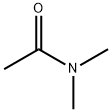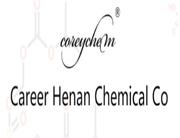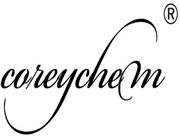1/1
N,N-Dimethylacetamide
$ 1.00
/1kg
- Min. Order1g
- Purity99%
- Cas No 127-19-5
- Supply Ability100KG
- Update time2019-07-06

career henan chemical co
VIP8Y
 China
China
Since:2014-12-17
Address:Zhengzhou High tech Zone, Henan Province, China
Enterprise Verified
Business Bank account
Basic Contact Infomation
Business Address
Trade Company



Chemical Properties
| Product Name | N,N-Dimethylacetamide |
| CAS No | 127-19-5 |
| EC-No | |
| Min. Order | 1g |
| Purity | 99% |
| Supply Ability | 100KG |
| Release date | 2019/07/06 |
| N,N-Dimethylacetamide Basic information |
| Outline Chemical Properties Incompatibility Penetration pathways First aid Protective measures Medical Care Test methods Storage Transport requirements Application Production method Category Toxicity grading Acute toxicity Stimulus data Explosive hazardous characteristics Flammability hazard characteristics Extinguishing agent Occupational standards |
| Product Name: | N,N-Dimethylacetamide |
| Synonyms: | PROPYLENE CHLORIDE;Acetyldimeethylamine;CBC 510337;CH3CON(CH3)2;dimethylacetamid;dimethylacetoneamide;Dimethylamid kyseliny octove;Dimethylamide acetate |
| CAS: | 127-19-5 |
| MF: | C4H9NO |
| MW: | 87.12 |
| EINECS: | 201-152-2 |
| Product Categories: | Peptide Synthesis;Solvents and Mixtures for Peptide Synthesis;Specialty Synthesis;CHROMASOLV PlusSemi-Bulk Solvents;CHROMASOLV PlusCHROMASOLV Solvents (HPLC, LC-MS);CHROMASOLV(R) Plus;LC-MS Plus and Gradient;VerSA-Flow? Products;AliphaticsAnalytical Standards;AmidesVolatiles/ Semivolatiles;Alpha Sort;Amines;Chemical Class;D;DAlphabetic;DID - DINAnalytical Standards;Solvents;Amber Glass Bottles;Solvent Bottles;Spectrophotometric Grade Solvents;Spectrophotometric GradeSolvents;ReagentPlus(R) Solvent Grade Products;ReagentPlus(R)Solvents;C-D, Puriss p.a.Alphabetic;Analytical Reagents for General Use;DID - DIN;Puriss p.a.;Aliphatics;Chromatography/CE Reagents;GC Headspace;Solvents - GC/SH;Anhydrous Grade SolventsSolvents;AnhydrousSolvents;Returnable Container Solvents;Sure/Seal? Bottles;Spectroscopy;UV/Vis Solvents;UV/Visible (UV/VIS) Spectroscopy;Anhydrous Solvents;Solvent by Application;Chemical Biology;Chemical Synthesis;Peptide Chemistry;SAJ Special Grade (Japan only);Solvents and Mixtures for Peptide Synthesis;Solvents by Special Grades (Japan Customers Only);Anhydrous;Products;Returnable Containers;Solvent Bottles;Solvent Packaging Options;Sure/Seal Bottles;Amber Glass Bottles;Analytical Reagents;Analytical/Chromatography;CHROMASOLV Plus;Chromatography Reagents &;HPLC &;HPLC Plus Grade Solvents (CHROMASOLV);HPLC/UHPLC Solvents (CHROMASOLV);Semi-Bulk Solvents;UHPLC Solvents (CHROMASOLV);VerSA-Flow Products;GC Headspace Solvents;GC Solvents;Solvents for GC applications;Organic solvents |
| Mol File: | 127-19-5.mol |
 |
|
| N,N-Dimethylacetamide Chemical Properties |
| Melting point | -20 °C |
| Boiling point | 164.5-166 °C(lit.) |
| density | 0.937 g/mL at 25 °C(lit.) |
| vapor density | 3.89 (vs air) |
| vapor pressure | 40 mm Hg ( 19.4 °C) |
| refractive index | n20/D 1.439(lit.) |
| Fp | 158 °F |
| storage temp. | 0-6°C |
| solubility | >1000g/l soluble |
| form | Liquid |
| color | Colorless to yellowish |
| PH | 4 (200g/l, H2O, 20℃) |
| explosive limit | 1.7-11.5%(V) |
| Water Solubility | miscible |
| Merck | 14,3227 |
| BRN | 1737614 |
| Stability: | Stable. Combustible. Incompatible with strong oxidizing agents. |
| InChIKey | FXHOOIRPVKKKFG-UHFFFAOYSA-N |
| CAS DataBase Reference | 127-19-5(CAS DataBase Reference) |
| NIST Chemistry Reference | Acetamide, N,N-dimethyl-(127-19-5) |
| EPA Substance Registry System | Acetamide, N,N-dimethyl-(127-19-5) |
| Safety Information |
| Hazard Codes | F,Xn,T |
| Risk Statements | 11-20/22-61-20/21-36 |
| Safety Statements | 16-24-53-45-36-28-26 |
| RIDADR | UN 1279 3/PG 2 |
| WGK Germany | 3 |
| RTECS | TX9625000 |
| F | 3-10 |
| TSCA | Yes |
| HS Code | 29241900 |
| Hazardous Substances Data | 127-19-5(Hazardous Substances Data) |
| Toxicity | LD50 orally in rats: 5.4 ml/kg (Bartsch) |
| MSDS Information |
| Provider | Language |
|---|---|
| Acetdimethylamide | English |
| SigmaAldrich | English |
| ACROS | English |
| ALFA | English |
| N,N-Dimethylacetamide Usage And Synthesis |
| Outline | N,N-dimethylacetamide dimethyl amine, also known as an acetyl group, an acetyl dimethylamine, referred to as the DMAC, which is a highly polar aprotic solvent, micro ammonia odor, very strong dissolving power, soluble wide, miscible with water, aromatics, esters, ketones, alcohols, ether, benzene and chloroform and other arbitrary and enable activation of molecular compounds. It is widely used as a solvent and a catalyst. The solvent, with high boiling point, flash point, thermal stability and chemical stability of the solvent, is used for polyacrylonitrile spinning solvent, synthetic resin and natural resins, formic acid vinyl ester resin, vinyl pyridine copolymer and aromatic carboxylic acid. The catalyst can be used in the process of urea heating to produce the reaction of cyanide, sodium halide and metal cyanide to produce the reaction of alkyl acetylene, organic halide and isocyanate. N,N-dimethylacetamide also can be used as electrolytic solvent and photography with coupler solvent, de paint agent, organic synthesis of raw materials, pesticide and pharmaceutical raw materials. Separation of styrene from C8 fraction, extraction, distillation, solvent, etc.. Invasive dangerous situation Inhaled toxic (toxicity stronger than dimethylformamide), decomposition products may be absorbed through the skin, eye, skin and mucous membranes, which have a strong irritant. See "dimethylformamide." Combustible. Rat oral LD505.4ml/kg. The allowable concentration in air is US 10ppm (35mg/m3). |
| Chemical Properties | Transparent colorless liquid. The organic solvent can be mixed with any water, alcohol, ether, ester, benzene, chloroform, and aromatic compounds. |
| Incompatibility | The N, N-Dimethylacetamide are incompatible wiyb carbon tetrachloride and other halogenated compounds. Unsaturated aliphatic compounds are soluble in this product, but saturated aliphatic solubility of the compound in this product is small. The solubility of hydrolysis product is small. But in the presence of acid, it can accelerate the hydrolysis. This product has good stability, and it does not decompose during distillation. With a strong base to form acetates and alkyl amines, in the presence of a proton, the alcohol can have solution when heated. |
| Penetration pathways | Steam inhalation, skin absorption, ingestion, contact with the eyes and skin. The workers, who are often exposed to dimethyl acetamide, observed jaundice, liver damage, but in general it can be quickly restored. When someone with FDA uses it as anticancer drugs and large doses of oral symptoms, it can cause depression, lethargy, visual hallucinations. It may also occur heart, kidney and brain degeneration. DMA mouse embryo has toxic effects on the rabbit have teratogenic effects. |
| First aid | If such chemicals like splashed into the eyes, you should rinse with running water 15min immediately; if contact with skin, you should wash it immediately with plenty of water; if they are swallowed, you should be given medical attention, clothing with plenty of water, induce vomiting, gastric lavage. Do not induce vomiting with unconscious person. Instead, they should be sent to the hospital at once. |
| Protective measures | Workshop should be ventilated, confined to production equipment. At high vapor concentrations work place, you should use an organic vapor respirator or air supplied respirator, gloves and protective clothing to prevent absorption through the skin. Wear goggles to prevent splashing into the eyes. In the workplace with splashing or spills of this substance, you should be taken off the wet clothes immediately and thoroughly wash the contaminated surface of the skin. Distribute to workers clean clothes before going to work every day, and take a shower after work. |
| Medical Care | When the pre-employment and periodic medical examinations, we should pay special attention to the skin, the central nervous system, liver disease or liver function tests. |
| Test methods | Measured in the air: adsorption with silica, methanol and analyzed by gas chromatography. |
| Storage | Storage with iron costumes to prevent the mechanical damage. Store in a cool, dry place, avoid light exposure, away from any possible source of ignition. |
| Transport requirements | N,N-dimethylacetamide Department are toxic flammable liquids, adjustment shall be toxic substances provides storage and transportation. Transportation shall be marked "dangerous drugs" mark, and prevent the sun, impact, when handling, attention gently on the container. Recommended methods of controlling waste incineration (incinerators shall have a scrubber or thermal means to reduce the discharge of NOx). |
| Application |
|
| Production method | 1. Acetic anhydride method dimethylamine and acetic anhydride have acylation reaction at 0-20 ℃, and then neutralized with low temperature liquid removing acetic, isolated from sodium acetate and Neutralization Solution and alkali washing, distillation, boiling range 164-166.5 DEG C fraction for the finished product. Material consumption fixed: acetic anhydride (95%) 1150kg/t, dimethylamine (40%) 1898kg/t. 2. Acetyl chloride method, by the reaction of dimethylamine and chloride, can also be prepared in dimethylacetamide. Compared with the process of the current domestic acetic anhydride process, it can reduce production costs, and improve economic efficiency. 3. Acetic acid method Fushun Research Institute of Chemical equipment using acetic acid and dimethylamine synthesis, and achieved good results. The process is characterized by the use of advanced catalytic distillation technology, strengthen reaction, reduce energy consumption, separation and product yield greatly improved, simplified the process. Compared to the synthesis process of this technology and two methylacetamide acetic anhydride methods, it can reduce production costs, improve economic benefits. China is currently more of people use it. 4. Study abroad Oxo trimethylamine and carbon monoxide carbonylation synthesis to produce N,N-dimethylacetamide approach. The reaction with iron, cobalt, nickel iodide or bromide as a catalyst. |
| Category | Flammable liquids |
| Toxicity grading | Poisoning |
| Acute toxicity | Oral-rat LD50: 4300 mg/kg; Oral-Mouse LD50: 4620 mg/kg |
| Stimulus data | Skin-Rabbit 10 mg/24 hr mild; Eye-rabbit mild 100 mg |
| Explosive hazardous characteristics | Mixed with air can be explosive |
| Flammability hazard characteristics | In case of fire, high temperature, strong oxidants combustible; combustion emissions of toxic nitrogen oxide fumes. |
| Extinguishing agent | Foam, powder, carbon dioxide |
| Occupational standards | TLV-TWA 10 PPM (35 mg/cubic meter); STEL 15 PPM (50 mg/m3) |
| Chemical Properties | colourless liquid with a faint ammonia odour |
| Definition | ChEBI: A member of the class of acetamides that is acetamide in which the hydrogens attached to the N atom have been replaced by two methyl groups respectively. Metabolite observed in cancer metabolism. |
| Uses | Solvent for many organic reactions and in industrial applications. |
| General Description | A clear colorless liquid with a faint odor similar to ammonia. About the same density as water. Flash point 145°F. Vapors heavier than air. May by toxic by skin absorption. May irritate eyes and skin. |
| Air & Water Reactions | Water soluble. |
| Reactivity Profile | N,N-Dimethylacetamide is an amide. Incompatible with oxidizing agents and halogenated compounds. Exothermic reactions occur with carbon tetrachloride and hexachlorocyclohexane. N,N-Dimethylacetamide can react violently in the presence of iron. Special Hazards of Combustion Products: Emits carbon oxides, nitrogen oxides, and dimethylamine when heated to decomposition. |
| Health Hazard | Liquid causes mild irritation of eyes and skin. Ingestion causes depression, lethargy, confusion and disorientation, visual and auditory hallucinations, perceptual distortions, delusions, emotional detachment, and affective blunting. |
| Fire Hazard | N,N-Dimethylacetamide is combustible. |
| Safety Profile | Moderately toxic by skin contact, inhalation, intravenous, and intraperitoneal routes. Mildly toxic by ingestion. Experimental teratogenic and reproductive effects. A skin and eye irritant. Less toxic than dimethylformamide. Mutation data reported. Combustible when exposed to heat and flame. A moderate explosion hazard. Violent reaction with halogenated compounds (e.g., carbon tetrachloride, hexachlorocyclohexane) when heated above 9OOC. Iron powder catalyzes the reaction so that it initiates at 71OC. When heated to decomposition it emits toxic fumes of NOx |
| Purification Methods | Shake the amide with BaO for several days, reflux it with BaO for 1hour, then fractionally distil it under reduced pressure. Store it over molecular sieves. [Beilstein 4 IV 180.] |
Company Profile Introduction
Established in 2014,Career Henan Chemical Co. is a manufacturerspecializing in the sale of fine chemicals. Mainly deals in the sales of: Pharmaceutical intermediates OLED intermediates: Pharmaceutical intermediates; OLED intermediates;


